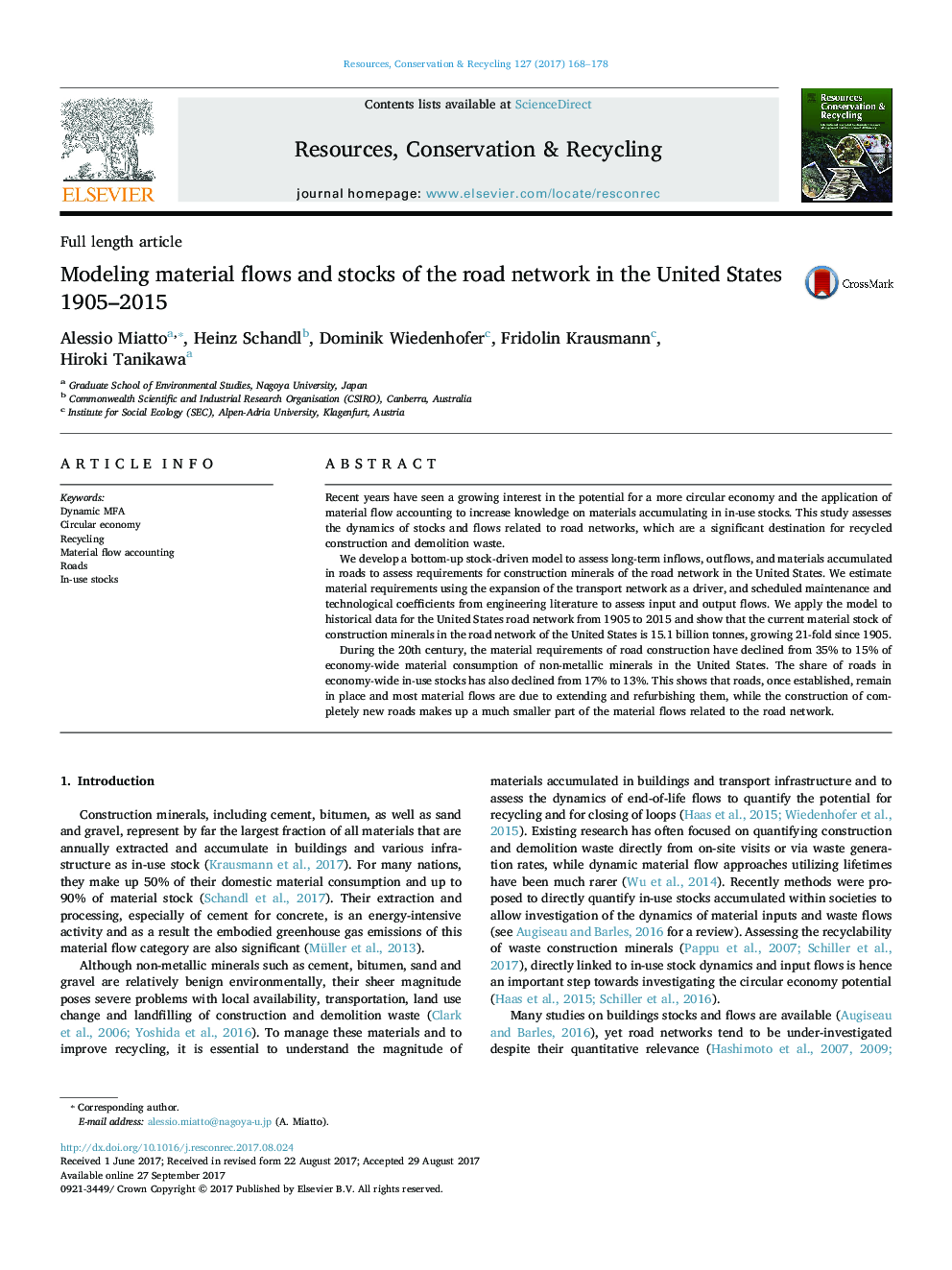| کد مقاله | کد نشریه | سال انتشار | مقاله انگلیسی | نسخه تمام متن |
|---|---|---|---|---|
| 5118597 | 1485665 | 2017 | 11 صفحه PDF | دانلود رایگان |
- The US road network stock grew 21 times from 1905 to 2015.
- Its length has not even doubled during the period of analysis.
- This indicates a big technological leap in road construction technology.
- Currently about 75% of material inflows are required for maintenance.
- By 2033 the US roads might saturate their absorption potential of C&D waste.
Recent years have seen a growing interest in the potential for a more circular economy and the application of material flow accounting to increase knowledge on materials accumulating in in-use stocks. This study assesses the dynamics of stocks and flows related to road networks, which are a significant destination for recycled construction and demolition waste.We develop a bottom-up stock-driven model to assess long-term inflows, outflows, and materials accumulated in roads to assess requirements for construction minerals of the road network in the United States. We estimate material requirements using the expansion of the transport network as a driver, and scheduled maintenance and technological coefficients from engineering literature to assess input and output flows. We apply the model to historical data for the United States road network from 1905 to 2015 and show that the current material stock of construction minerals in the road network of the United States is 15.1 billion tonnes, growing 21-fold since 1905.During the 20th century, the material requirements of road construction have declined from 35% to 15% of economy-wide material consumption of non-metallic minerals in the United States. The share of roads in economy-wide in-use stocks has also declined from 17% to 13%. This shows that roads, once established, remain in place and most material flows are due to extending and refurbishing them, while the construction of completely new roads makes up a much smaller part of the material flows related to the road network.
154
Journal: Resources, Conservation and Recycling - Volume 127, December 2017, Pages 168-178
